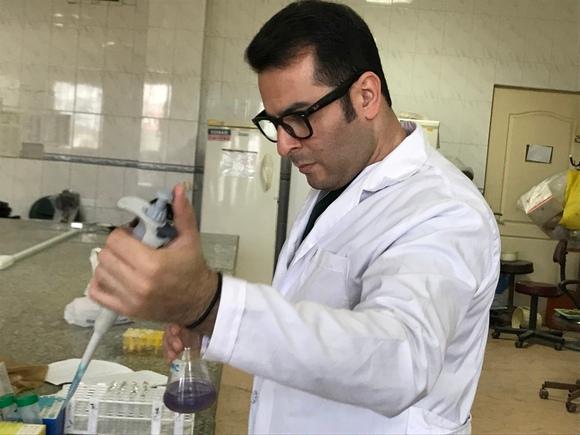Explore all the information on
Metabolic and nutritional diseases in poultry
Deficiencies or disturbances of nutrition cause a variety of diseases and can arise in different ways. The amount of a particular nutrient in the diet may be insufficient to meet the requirements, the diet may contain substances that inactivate the nutrient or inhibit its absorption/utilisation, or metabolism may be upset by the interaction of dietary and environmental factors. Peroxidation of lipids or oxygen free radical generation in general is a physiological process important for cell metabolism, division and differentiation and also for the biosynthesis of hormones and prostaglandins. Several common health conditions can affect poultry, including visceral gout, fatty liver syndrome, cloacal prolapse, osteomalacia, vitamin E deficiency, and ascites syndrome. Understanding these conditions and implementing appropriate management strategies can help prevent and treat them effectively.
I. INTRODUCTION Right now, there are two different models of production in the world and they are based on the income of the people. We have 7% of the population that lives on more than US$50 per day (Pew Research Centre, 2015) and the percentage of food expenses is a minimal part of their income. These rich countries are moving towards production where cages are banned and the birds need to be provided with space outside of the barn. However, 71% of the world population lives...
Comments : 1
Recommendations: 0
1. Introduction The occurrence of ‘wet litter’ in meat chicken sheds is associated with concerns regarding animal welfare, flock health, food safety, environmental impacts and reductions in production efficiency. Mitigating wet litter will only be achieved when there is thorough understanding of the multidimensional causal factors. This will require a multidisciplinary approach to understand the hydrology in the meat chicken shed micro-environment; the biological...
Comments : 0
Recommendations: 1
Cordyceps militaris is widely used as a tonic for vitality and longevity for thousands of years by the Chinese, it is a rare and exotic Chinese medicinal mushroom. Cordyceps militaris also used for a long time as a nutraceutical food in Korea and Japan. The medical potential of the metabolites of Cordyceps militaris has been widely reviewed. Cordycepin, or 3'-deoxyadenosine, is the major active secondary metabolite of Cordyceps militaris ....
Comments : 0
Recommendations: 1
...
Comments : 0
Recommendations: 0
INTRODUCTION Footpad dermatitis (FPD) is present in many different types of broiler production systems. In 1 study, Pagazaurtundua and Warriss (2006) estimated prevalence of FPD ranged from 9.6 to 98.1% depending on the housing system used. This common issue has a large impact on growers because the presence of FPD is associated with decreased live weight and leg meat yield and increased carcass condemnations (Hashimoto et al., 2013). These condemnations can have a massive...
Comments : 1
Recommendations: 0
Guillermo Tellez-Isaias (University of Arkansas) gives a talk on the interactions between diet ingredients, gut microbiome, nervous system, immune system, endocrine system and mitochondria, during the Symposium on Gut Health in St. Louis, USA....
Comments : 0
Recommendations: 0
The method of measuring HDL blood serum of laying birds by spectrophotometric method, which is one of the common methods for measuring blood parameters by laboratory method. Measurement of high-density lipoprotein (HDL) HDL stands for "high-density lipoprotein", which is the name of one of the compounds in the body. This compound is one of the members of the lipoprotein family, which are made in the body to transport fats to different places. HDL cholesterol is called good cholesterol because...
Comments : 0
Recommendations: 0
INTRODUCTION According to data from the Brazilian Animal Protein Association (ABPA, 2018), in 2017 the Brazil occupied the 2nd place in the world poultry meat production, behind only the United States of America. However, Brazil remains in first place in world exports, destining more than 30% of chicken meat production to exportation. Following the legal recommendations of the Ministry of Agriculture, Livestock, and Supply, through the supervision of the Federal Inspection...
Comments : 1
Recommendations: 2
INTRODUCTION In the last decade, Brazil has recorded a 10.56% increase in the number of poultry (broiler, turkey and quail) slaughtered in establishments registered under the “Serviço de Inspeção Federal” (SIF - Federal Inspection Service), increasing from 4,795,965,464 birds in 2010 to 5,302,510,470 birds in 2019 (MAPA 2020). This growth is the result of the competitive strength of poultry farming in the country, based on low production costs,...
Comments : 0
Recommendations: 0
by Sam Shafer
Poultry scientists find potential link between valine×leucine interactions and woody breast
According to a new study in The Journal of Applied Poultry Research , producers have little to worry about when it comes to branched-chain amino acid interactions and their effects on broiler live performance...
Comments : 0
Recommendations: 0
Background For many years the commercial broiler industry has focused on genetic selection for economically important traits such as rapid gain of muscle mass, decreased time from hatch to market, and increased feed efficiency. Undoubtedly, this strategy has resulted in the development of a chicken genotype with superior growth characteristics, but history has shown that intensive genetic selection in meat type poultry for production traits will inevitably lead to occurrence of...
Comments : 1
Recommendations: 1


Standardised Ileal Amino Acid Digestibility of Ingredients for Broiler Chickens is Influenced by Feed Form
Suggested link
...
Comments : 4
Recommendations: 1
INTRODUCTION Genetic selection in poultry has progressed continuously since the early 1960s, resulting in faster growth rates and higher meat production (Havenstein et al., 2003a,b). Over the past 60 years, body weight gain has increased fourfold from 1957 to 2005 with a simultaneous 50% reduction in feed conversion ratio and 79% higher Pectoralis major yield in males and 85% in females (Zuidhof et al., 2014). At the same time, the growth, development, structure, and...
Comments : 1
Recommendations: 6
The liver is one of the most metabolically active organs in the bird and its function can be altered when the animal is exposed to toxic compounds, which is more frequent in birds with long lifespans, such layers and breeders. It is involved in key digestive, metabolic and excretory activities: Metabolism of proteins, fats and...
Comments : 6
Recommendations: 1
1. Introduction The consumption of poultry meat has shown an increase from 2016 (116,845.36 thousand metric ton) to 2018 (120,884.63 thousand metric ton) [1]. Moreover, during the period 2020–2029, global livestock production is expected to expand by 14%, poultry remaining the fastest growing meat accounting for about half of the projected increase in total meat output, while world population is expected to grow only by ca 1% per year [1]. The goal of the poultry...
Comments : 0
Recommendations: 2
The liver is the biochemical center of the organism, involved in multiple metabolism and homeostasis functions. Its importance in the poultry production is undeniable because of its role on the protein synthesis and, therefore, on meat and egg production, as well as on the immune response of the animal to vaccination and diseases. Any challenge affecting this organ will have a negative impact in the productivity of growing and laying birds. The use of liver conditioner pronutrients aim...
Comments : 2
Recommendations: 3
INTRODUCTION The rapid growth of modern broilers in a relatively short period of time requires a parallel increase in the size or capacity of supply organs, such as those of the cardiovascular and respiratory systems. However, due to the slower development of these organs relative to body growth rate, the capacity to balance body energy is compromised, particularly under extreme environment conditions, such as cold stress (Shahir et al., 2012; Shinder, 2002). Cold...
Comments : 0
Recommendations: 1
INTRODUCTION Ascites or pulmonary hypertension syndrome (PHS) is one of the main causes of mortality in modern broilers. It is estimated that ascites incidence may be as high as 20% of total mortality in broilers [1]. Due to selection for rapid growth, broiler chickens have a high metabolic rate and hence higher oxygen requirements. However, they have a marginal capacity of lung and cardiovascular systems to supply their high oxygen demand. This results in impaired ability to...
Comments : 0
Recommendations: 0
We have a layer poultry farm here in the philippines. 2 bldg. with a population of 9,400/bldg. The breed is lohman white. Age is between 20 - 28 weeks old with a production of 70% and 90%. The problem is our mortality is ranging from 10 - 15 heads per building per day. primary cause of death is prolapse and egg bound. we fed them with a high enery feeds, does the high energy feeds contributes to our chicken prolapse? Temperature is around 28 to 30degree celcius....
Comments : 30
Recommendations: 0







.jpg&w=3840&q=75)
.jpg&w=3840&q=75)










.jpg&w=3840&q=75)






.jpg&w=3840&q=75)














